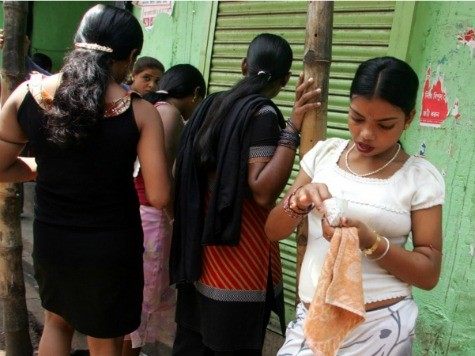Human trafficking, especially of females, is a major problem in Asia. The latest incident in India proves the situation is only getting worse.
A report by India’s Central Bureau of Investigation in early January revealed that up to 8,000 Nepalese girls had been trafficked to Dubai “for alleged prostitution.” One of the main transits is the Indira Gandhi International Airport. The bureau conducted interviews with the “Foreign Regional Registration Office, Air India, Qatar Airways, Bureau of Immigration and 15 travel agents based in Delhi.” From the Times of India:
Giving details of modus operandi of the alleged trafficking, a senior agency official said, the girls are booked with tickets, provided visa and hotel reservation in Nairobi via Dubai for tourist purposes but when they land in Dubai, their tickets for Nairobi and hotel bookings are cancelled.
The girls also carry with them ‘Paper Visa’ to work in Dubai which they keep hidden with them. Once the tickets are cancelled in Dubai, they go to their agents there, stay for two-three months and come back, the official claimed.
When asked about Nairobi connection when they can easily go to Dubai and come back as they have valid documents, the official said there could be many reasons–the Nepalese officials seek details of employer and nature of work and prostitution is never encouraged, girl going to Dubai for work is a social stigma among others.
The bureau received information about girls sent to Dubai for prostitution in July 2014 on an Air India flight, but authorities did nothing since “all the documents were proper.” The development forced the bureau to push the government to “plug the loop holes in the immigration system which is exploited by the agents to supply girls to gulf countries.”
In 2013, Sunny Hundal, the author of the e-book India Dishonored: Behind a Nation’s War on Woman, claimed there are over 60 million women missing in India. These women were either aborted, killed after birth, killed by parental neglect because they were girls, or possibly murdered because they did not pay enough dowry at marriage.
In September, CNN featured an op-ed by Carl Gierstorfer, a journalist who specializes in violence against in India, about a lack of brides in India due to high abortion rates on baby girls. Giestorfer echoed Hundal’s sentiments about the lack of females in India, which leads to female trafficking:
Decades of sex-selective abortion have created an acute lack of women in certain parts of India. Traffickers capitalize on the shortage by recruiting or kidnapping women ensnared in poverty to sell as brides. It’s a cycle influenced by poverty and medical technologies, but one that ultimately is perpetuated by India’s attitude towards women.
Dlhi suburb gynecologist Puneet Bedi told Gierstorfer it is “mass murder on an unprecedented scale.” From CNN:
Census data shows some districts in India have fewer than 800 girls born for every 1,000 boys, leaving male-heavy villages.
A maverick amongst India’s medical community, Bedi accuses his colleagues of helping parents use ultrasound scans to determine the sex of the baby and abort females, because of a cultural preference for sons. If this practice doesn’t stop, Bedi fears the worst for the future of India.
Nepal is on the northeast border of India, which is near India’s Assam state, where many Indian women are chosen for trafficking because “they have much more balanced sex ratios.” Over 3,000 women disappeared in the area in 2012, but the community stigmatizes those who return. Unfortunately, some families are so poor they sell their daughters to traffickers.
In March, Stanly Kizhakeparambil Varghese and Parashuram Mynkanalli Lingegowda celebrated the 25th anniversary of their organization Odanadi, which rescues and rehabilitates “individuals who have been trafficked, prostituted, enslaved and abused.” From The Guardian:
Recent reports indicate millions are involved and affected, and India is a source, destination and transit country for child trafficking. About 7,000 sex workers cross over from Nepal into the country every year, and children from Bangladesh enter via west Bengal, lured by marriage or job offers.
In India, children from poor and rural communities, especially those with emotional, physical and learning difficulties, are particularly vulnerable to inter-country trafficking. They are often kidnapped or bought from their families to be sold to brothels and into beggary or forced labour.

COMMENTS
Please let us know if you're having issues with commenting.